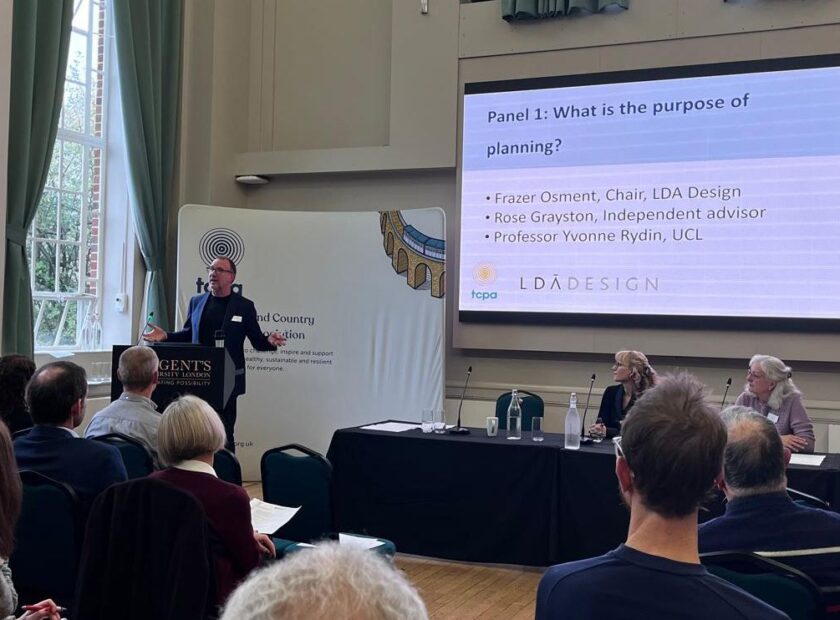- The current system of developer contributions is failing to capture the money needed to unlock affordable homes and pay for essential infrastructure and social facilities.
- Only 33% of major developments have a section 106 agreement attached and only 22% pay CIL.
- A new report makes the case for a fundamental reform of the system. This includes a wider approach to direct land purchase at a sub-market price where it is in the public interest, and allowing local planning authorities to set CIL rates with direct reference to value rather than floorspace
Building healthy and affordable places depends on being able to pay for the infrastructure and social facilities vital to thriving lives. That in turn depends on better use of the increased land values created when planning permission is granted or public investment is made. At present, most of this value ends up with landowners.
A new discussion paper, Development taxes and levies: lessons from the past, ideas for the future, launched jointly today by the University of Cambridge and the Town and Country Planning Association [1], considers how a fairer deal for the public can be achieved, while also securing better designed places.
The 2024 Labour Party election manifesto stated they would ‘strengthen planning obligations to ensure new developments provide more affordable homes’. This discussion paper argues that the current system of section 106 agreements and Community Infrastructure Levy (CIL) is inefficient and insufficient to deliver the government’s ambitions for housing and growth. Only 33% of ‘major’ developments have a section 106 agreement attached and only 22% pay CIL. These figures are even lower for ‘minor’ development. [2]
Taxes could therefore be applied to a wider range of development, so that more contribute towards funding public goods, including vital infrastructure, while protecting the viability of developments which already contribute something, or which cannot afford to contribute anything.
The paper acknowledges concerns about changing the system, as seen with opposition to the proposed infrastructure levy, and that reforming development taxes is not the whole solution to funding infrastructure provision. But it highlights that there are also political and economic risks with ‘business as usual’.
Development taxes and levies: lessons from the past, ideas for the future draws on new University of Cambridge research about the lessons from past development taxes and sets out options for improving the current system. But also argues that if there is a strong case for a more fundamental reform including:
- Allowing local planning authorities to set CIL rates with direct reference to value rather than floorspace so that it is more sensitive to actual site development values.
- A new national or regional development levy to help fund sub-regional and regional infrastructure across local authority boundaries.
- A wider approach to direct land purchase at a sub-market price where it is in the public interest.
Miles Gibson, former No 10 adviser and departmental researcher at the University of Cambridge’s Department of Land Economy, said: ‘Previous repealed development taxes are a much richer source of reform ideas than their critics would have us believe. The key lesson is: keep it simple and flexible. Overambitious and complex policies with multiple objectives, uncertain economic effects, rigid legislation, and high political visibility are likely to fail in the same way as previous levies. Future reforms need to be based on clear objectives, the re-purposing and evolution of existing policy tools and legal concepts, and smart politics.’
Fiona Howie, chief executive of the TCPA, said ‘No contribution is being made via either planning obligations or CIL by 97% of all non-residential developments. We need to capture more value, from more developments. So, while we appreciate there may be a desire from the government to avoid disruption in the short term, change is needed if its aspirations for housing and growth are to be met.’
Notes and contact
[1] The discussion paper, Development taxes and levies: lessons from the past, ideas for the future, and the research it draws on, British development taxes since 1945, are available at https://www.tcpa.org.uk/resources/development-taxes-andlevies-lessons-from-thepast-ideas-for-the-future/. It has been developed as part of a project funded by the University of Cambridge’s Social Science Impact Fund (Higher Education Innovation Funding grant number G130539), Department of Land Economy and Centre for Science & Policy; by the Town and Country Planning Association; and by the Lady Margaret Paterson Osborn Trust.
[2] See page 12 of the discussion paper. Major developments are officially defined as those of 10 houses or more, or 1,000 sqm or more; minor developments are all developments below those thresholds, except for householder developments.




